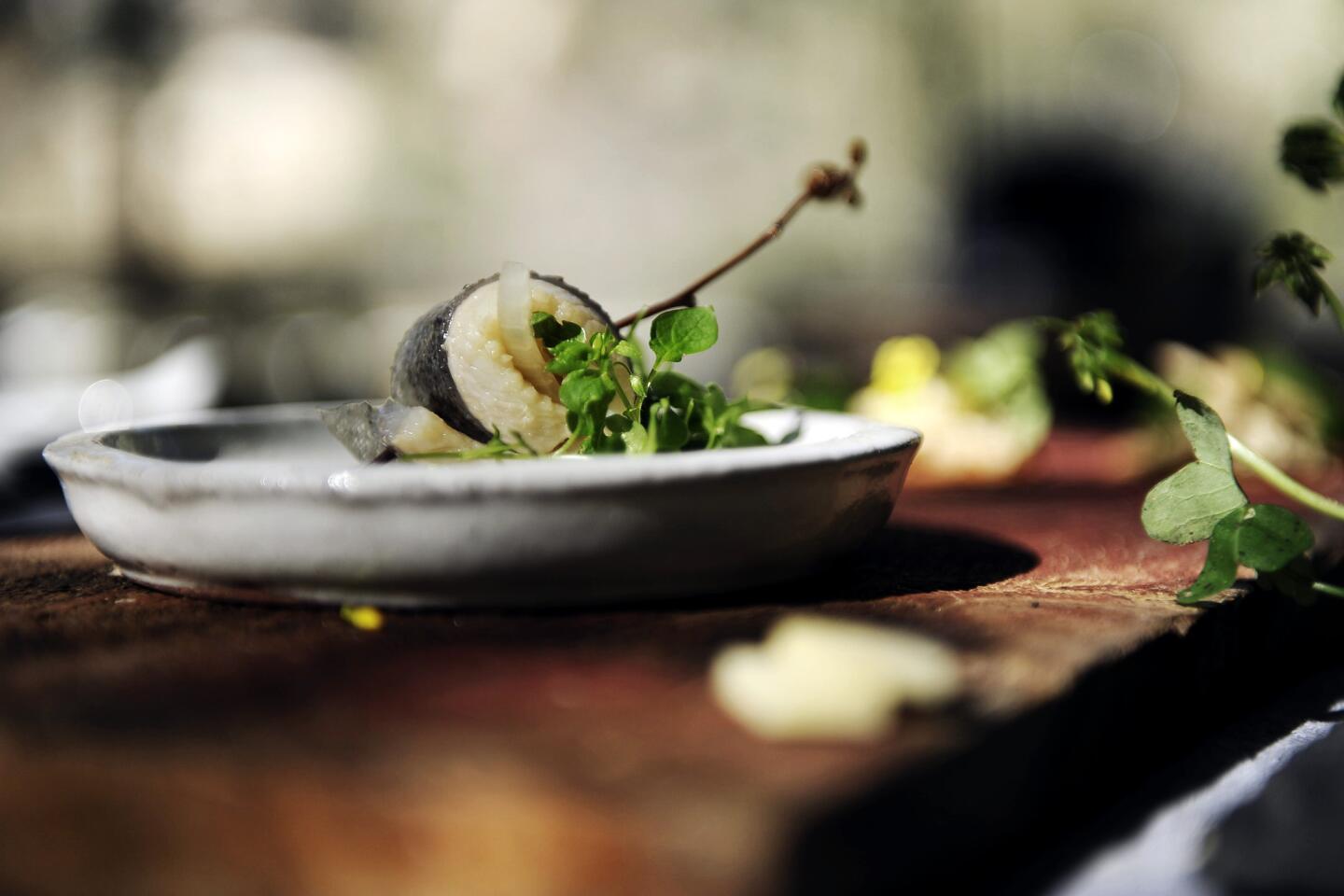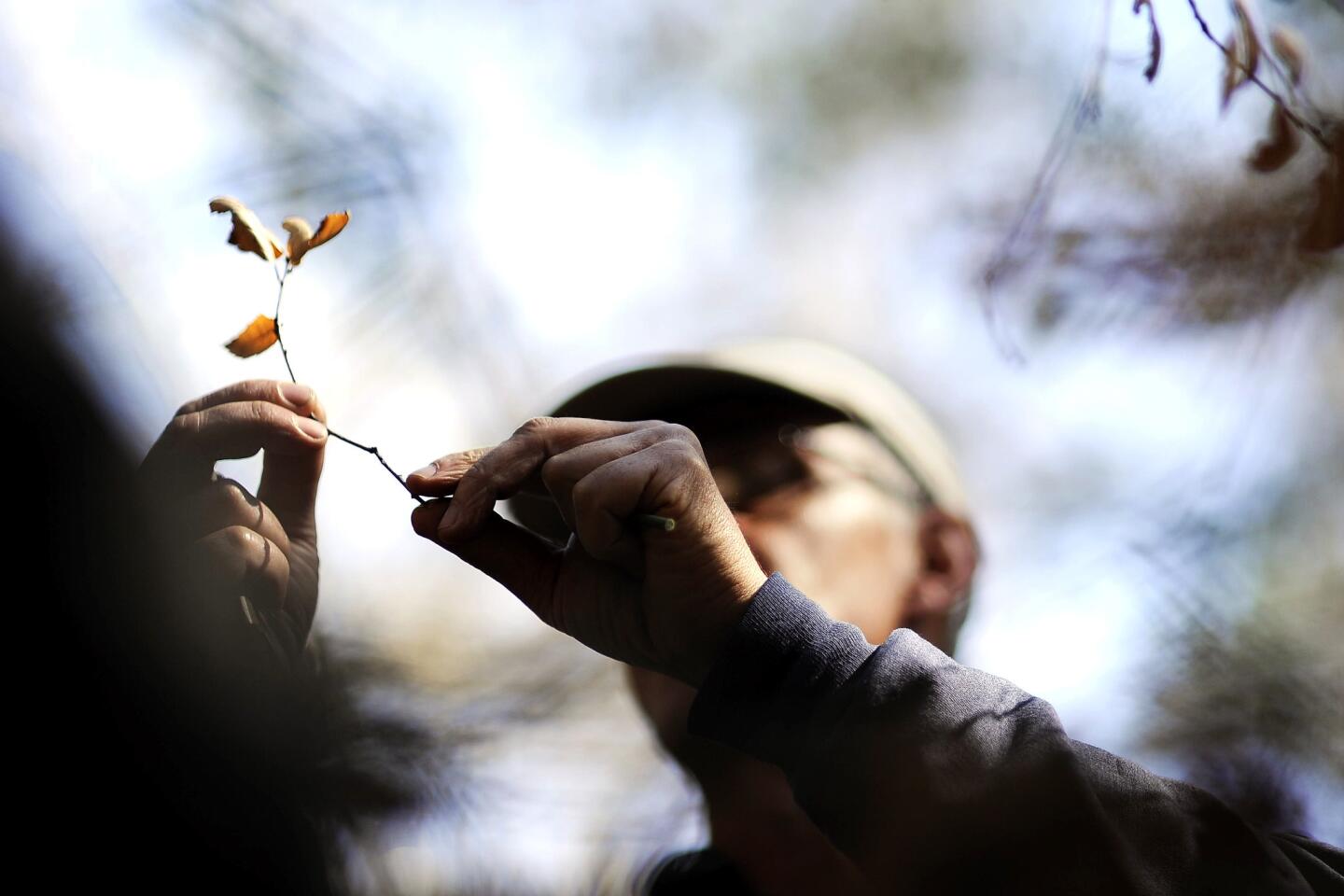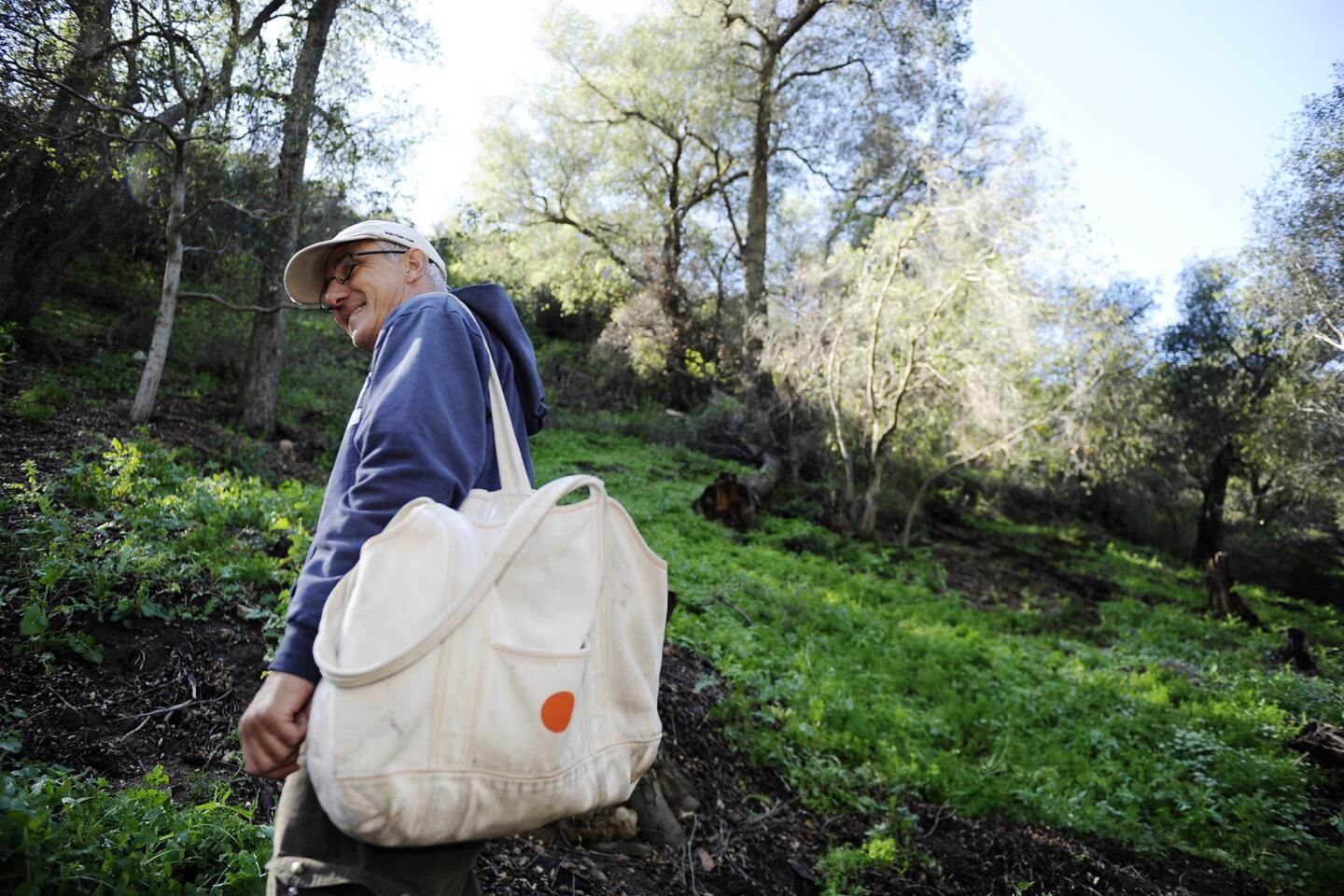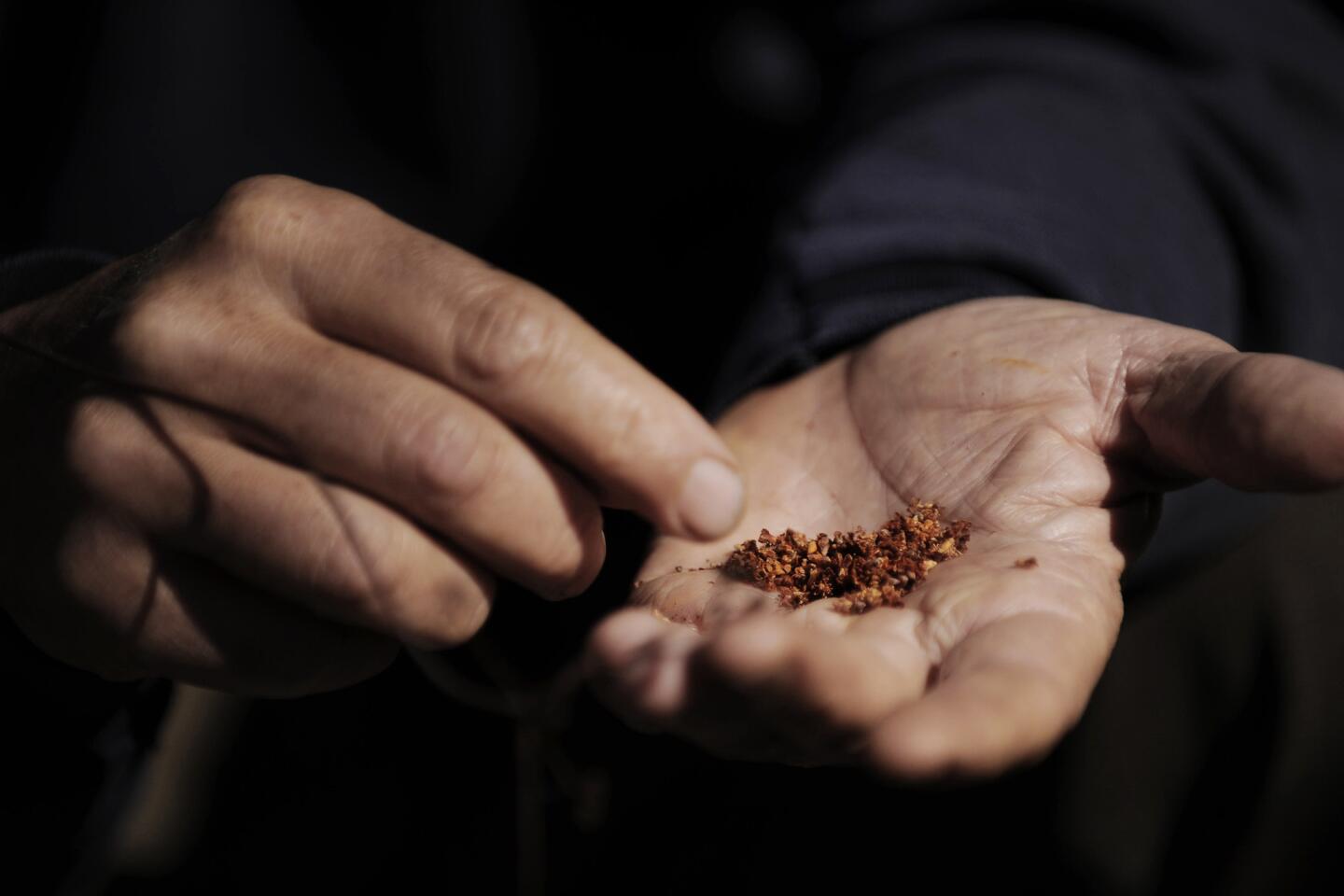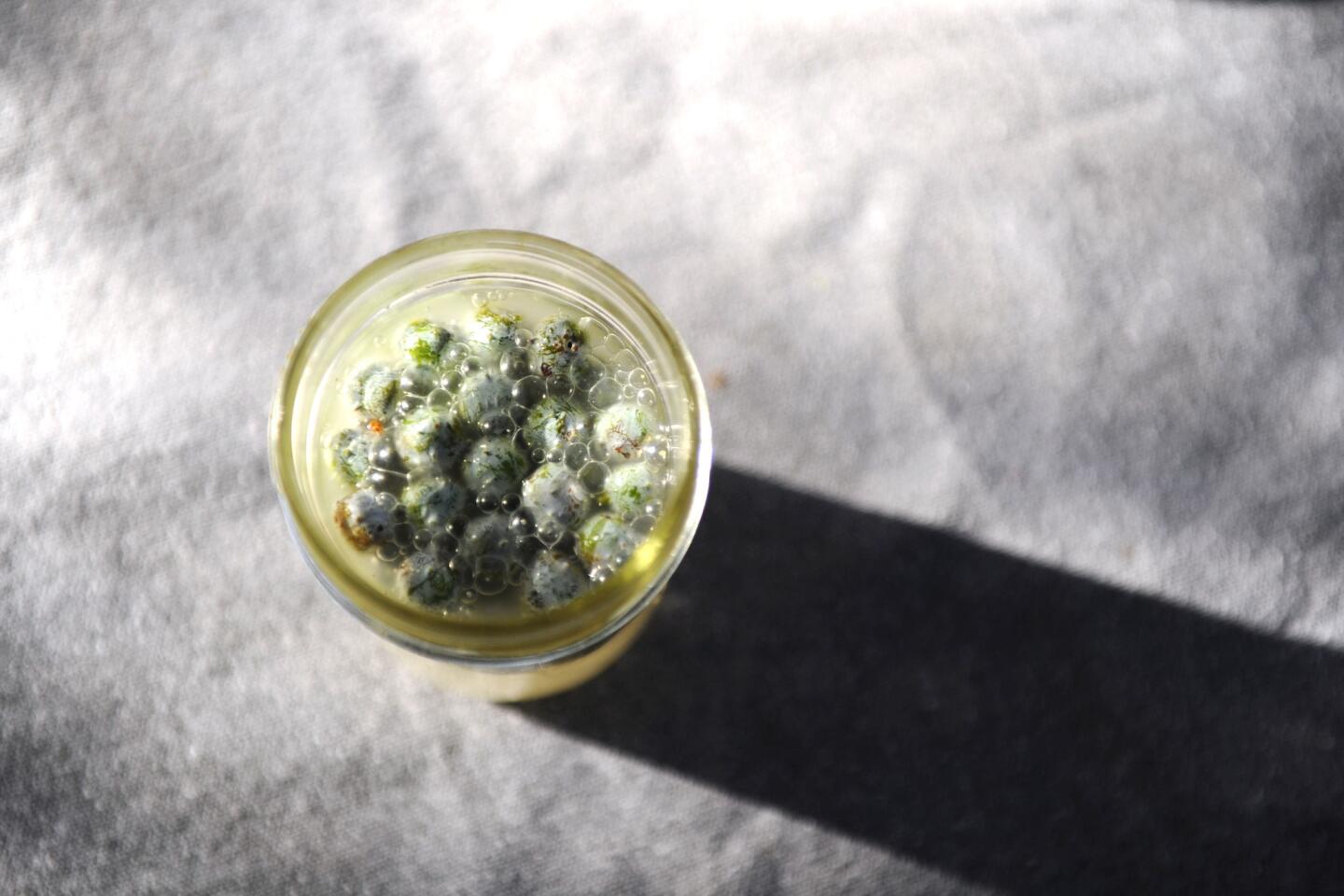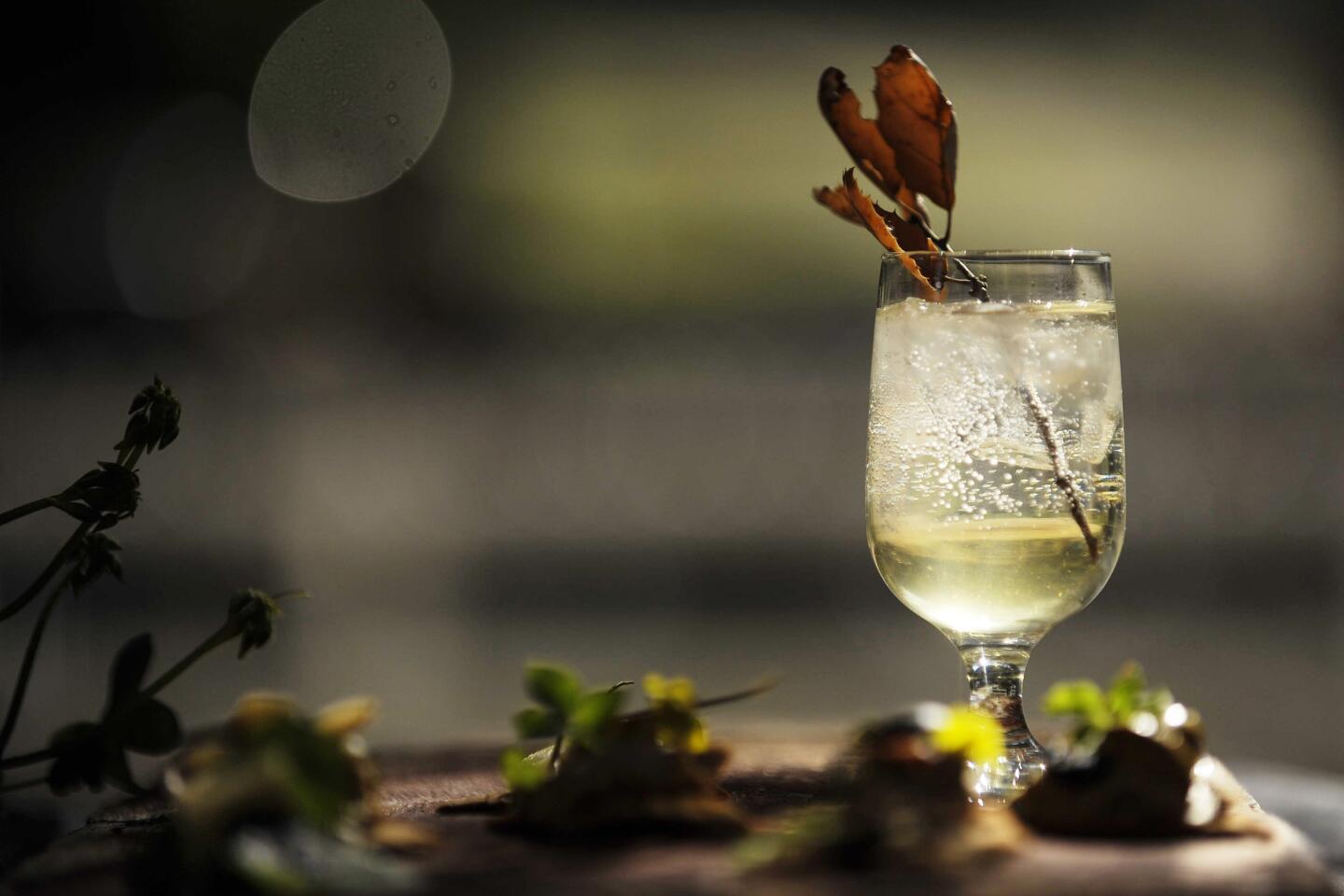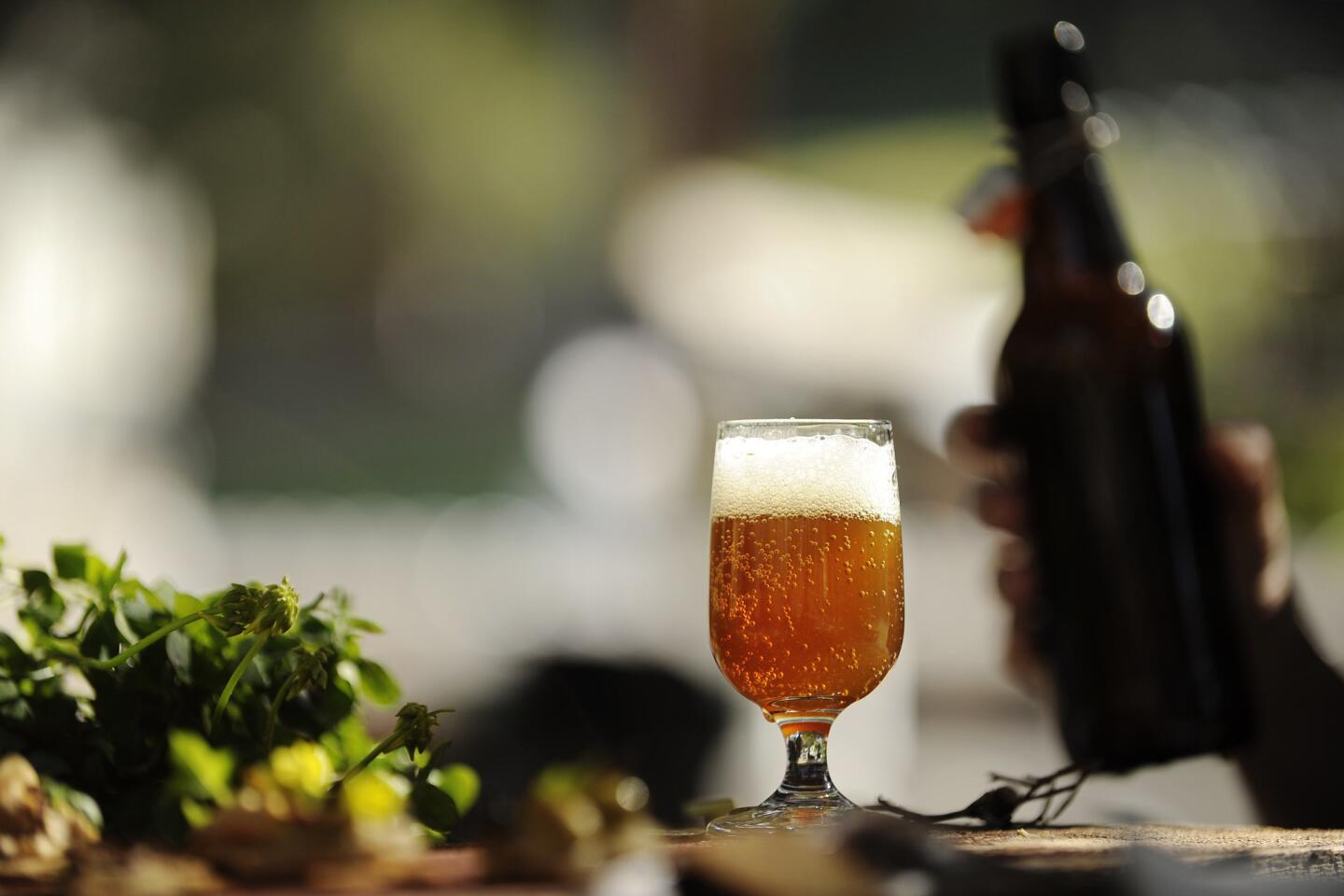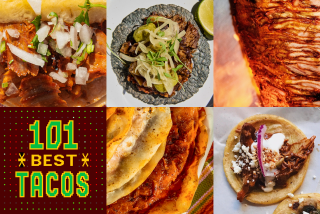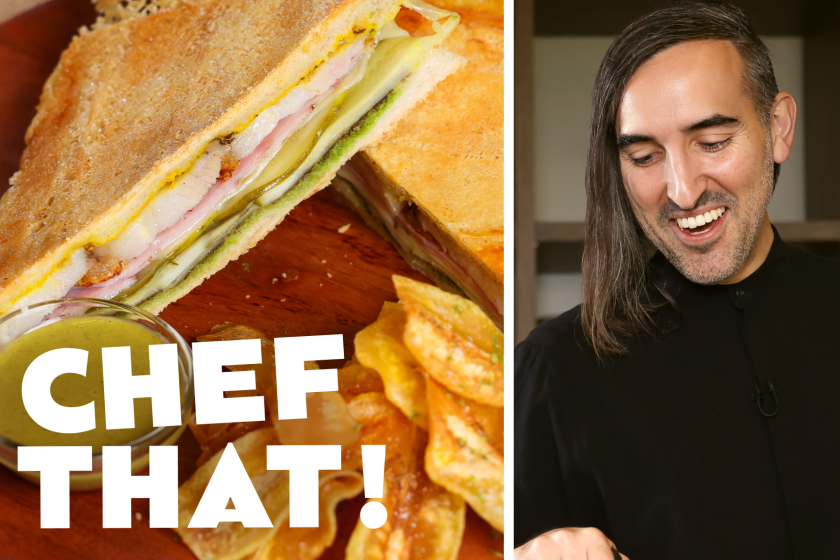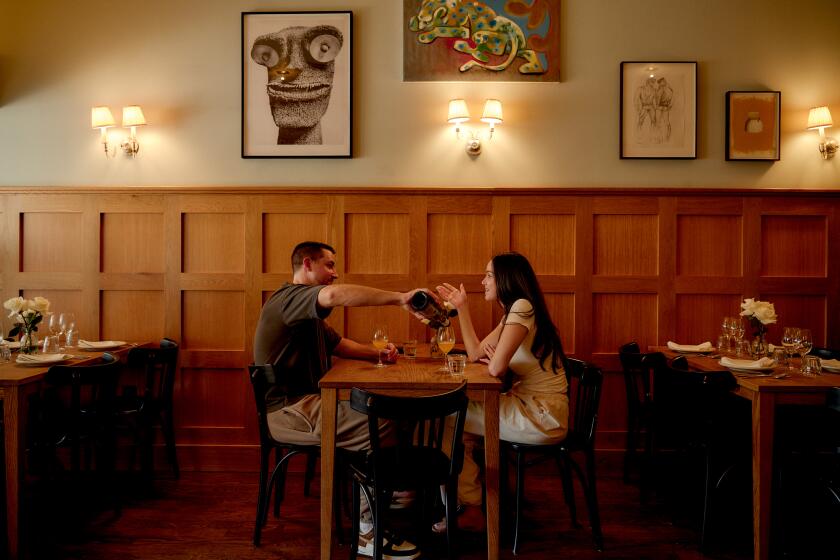Walk with one of L.A.âs top foragers as he picks his meal on the mountainside
Foraging, it must be said, is dangerous work. This is mostly because of the inherent dangers of getting poisoned: The wrong weeds can kill you. For Pascal Baudar, the 54-year-old Belgian who is a prominent forager in Los Angeles, this aspect of his profession has been less a danger than what else heâs encountered in the woods: rattlesnakes and bears, mountain lions and, lately, zombies.
âI was foraging in the Angeles Forest a few weeks ago,â said Baudar on a return trip in late February, a few days after some desperately needed rainfall, âand saw a zombie going by. Then I saw the camera.â The Angeles National Forest is not only about 15 miles away from where Baudar lives with his partner Mia Wasilevich, a private chef who specializes in wild food â itâs also about the same distance away from Hollywood. âAnother time, I saw a guy in full armor with a hatchet, and not a small one. I have a small knife.â Baudar held up the inexpensive pocket knife heâd just used to harvest a thatch of burr chervil. âBut most of the time itâs just you and the mountain lions.â
------------
For the Record
March 7, 11:05 a.m.: This article misspells n/naka chef Niki Nakayamaâs last name as Nakamura.
------------
The biggest danger to his profession these days, though, comes less from a zombie apocalypse or the burgeoning cougar population in the local mountains than it does from the weather: California has been in a severe drought for years, which has had a debilitating effect not only on our snowpack and water supply, but everything that depends on it. âThis year was the worst,â Baudar said. âBut itâs made me more creative. Last year I went into seeds â I never had to do seeds before â I started studying bark. We adapt; we improvise.â
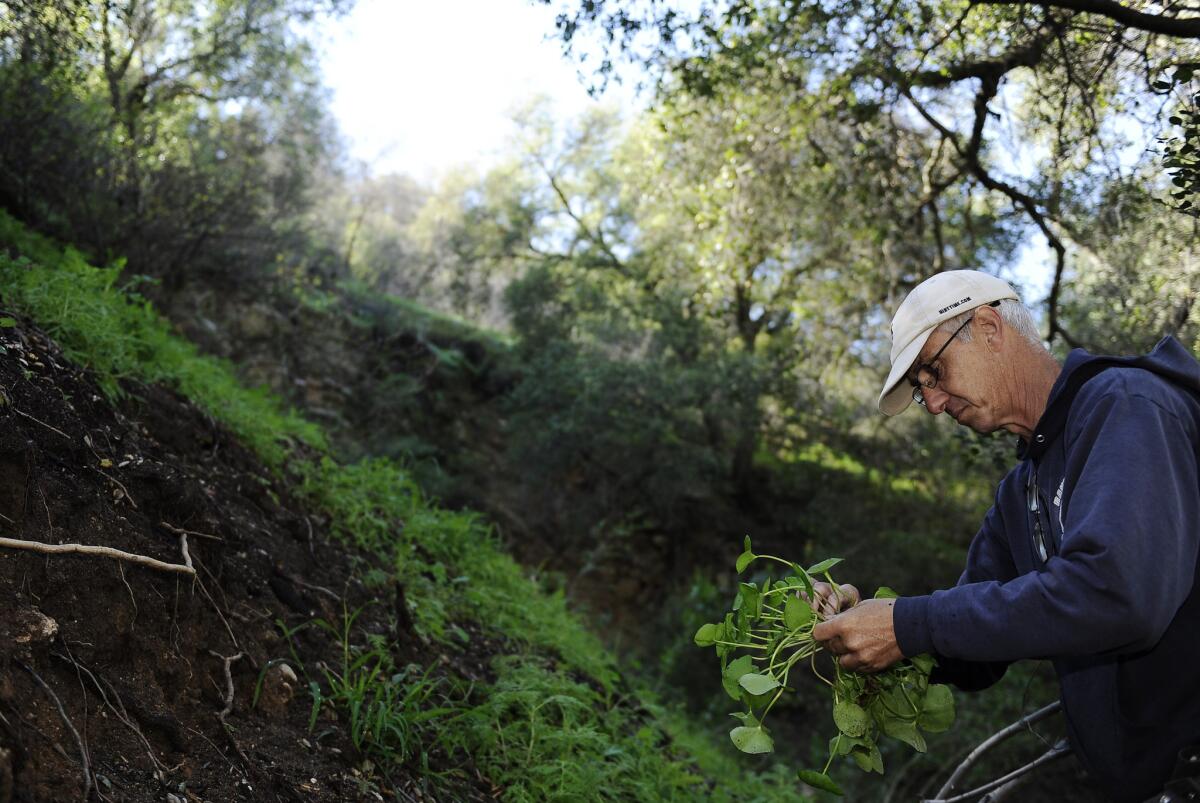
Pascal Baudar discovers minerâs lettuce (Claytonia perfoliata), which is a fine wild salad green.
He paused in a clearing surrounded by live oaks, surveying a patch of oxalis and the thick grasses hiding his boots. âThis is like Whole Foods for me,â he said. âPeople say wild food is free, but they donât realize the work you do for it.â
Itâs this work that is the focus of his first book, âThe New Wildcrafted Cuisine,â which comes out from Chelsea Green next month. Itâs a gorgeously photographed â mostly by Baudar â collection of prose and recipes thatâs both survival manual and mission statement. (Wasilevichâs own first book, on wild greens, will come out later this year.)
The chefsâ go-to
If youâve heard of Baudar, thatâs probably because of the work heâs done with some of the best chefs in Los Angeles: Josiah Citrin of Mélisse in Santa Monica, Ari Taymor of Alma, Girasolâs C.J. Jacobson and Trois Mecâs Ludo Lefebvre, as well as bartender Matthew Biancaniello, have all spent extended time foraging with Baudar and incorporating his wild ingredients into their dishes and drinks. Right now Baudar, who typically works with one chef at a time, is foraging with Niki Nakamura of n/naka, whoâs been redesigning her kaiseki menu around local ingredients.
In less than an hour in the woods, Baudar filled the bag on his shoulder with California sagebrush (âdried, itâs great on steakâ), London rocket (âspicy but a hint of gasoline; perfect for L.A.â), mallow (âkind of like okra when you cook itâ), mugwort (âthe Vikings used it to make beerâ), piñon pine (âtastes like tangerineâ) and black sage (âhot chocolate with black sage: You go to heavenâ). Other items in that bag: rocks, bark, mulefat branches heâll make into chopsticks. âEighty percent of what you see,â he says, pointing out some sow thistle, âcan be used for culinary purposesâ; if not in his dishes of chaparral-roasted quail, pickled trout in mountain vinegar or rosin-baked potatoes, then for making wine or beer, or through other methods of preservation and fermentation.
But although Baudar grew up foraging in the country (âIn Belgium itâs normal. The old people teach you.â) for parents whom he describes as âincredible cooks,â heâs quick to point out that heâs not a chef. And it wasnât the pull of kitchens or restaurants that drew him back to the craft, 16 years ago, after a career as a graphic artist and virtual reality programmer: It was the millennium itself, or rather the end of it.
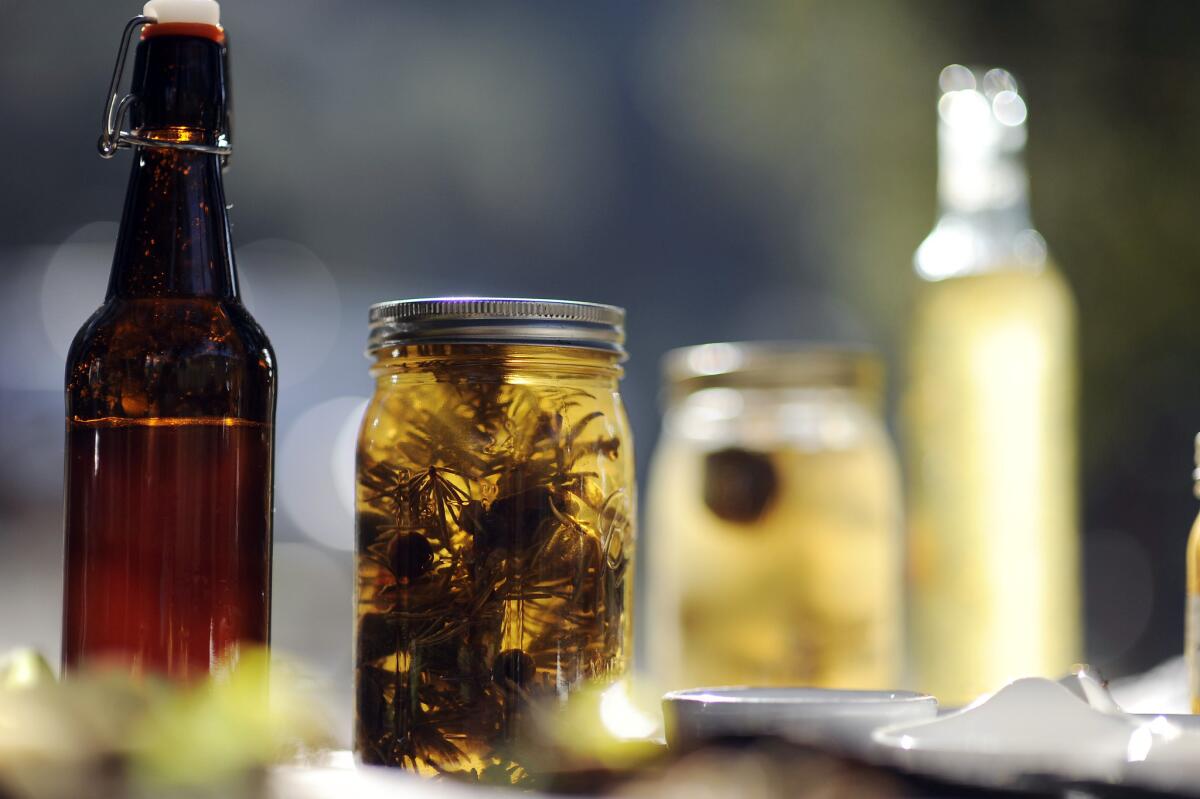
A jar of mountain vinegar, which contains manzanita cider vinegar, white fir, juniper berries, pine needles, turkey tail mushrooms and piñon pine needles.
âI knew Y2K wouldnât be a big deal, but I worried that people would panic; I remember people at Ralphs yelling for water.â So Baudar went back to the woods, and began taking and eventually teaching classes in survivalism and self-reliance. âI was definitely not an extremist, but my life changed.â
His learning process
Baudar credits not only survivalists for inspiration and back story, but the Native Americans who were using wild plants centuries before celebrated chefs such as Marc Veyrat, Michel Bras, René Redzepi and Magnus Nilsson (âMagnus can go very primitive, and I like that about himâ) rediscovered them. He also credits the botanists and medieval scholars who studied them â Baudar obsessively researches any plant before using it, consulting books in French and Latin, plus the endless network of the Internet â as well as the old European ladies he says he sometimes sees foraging.
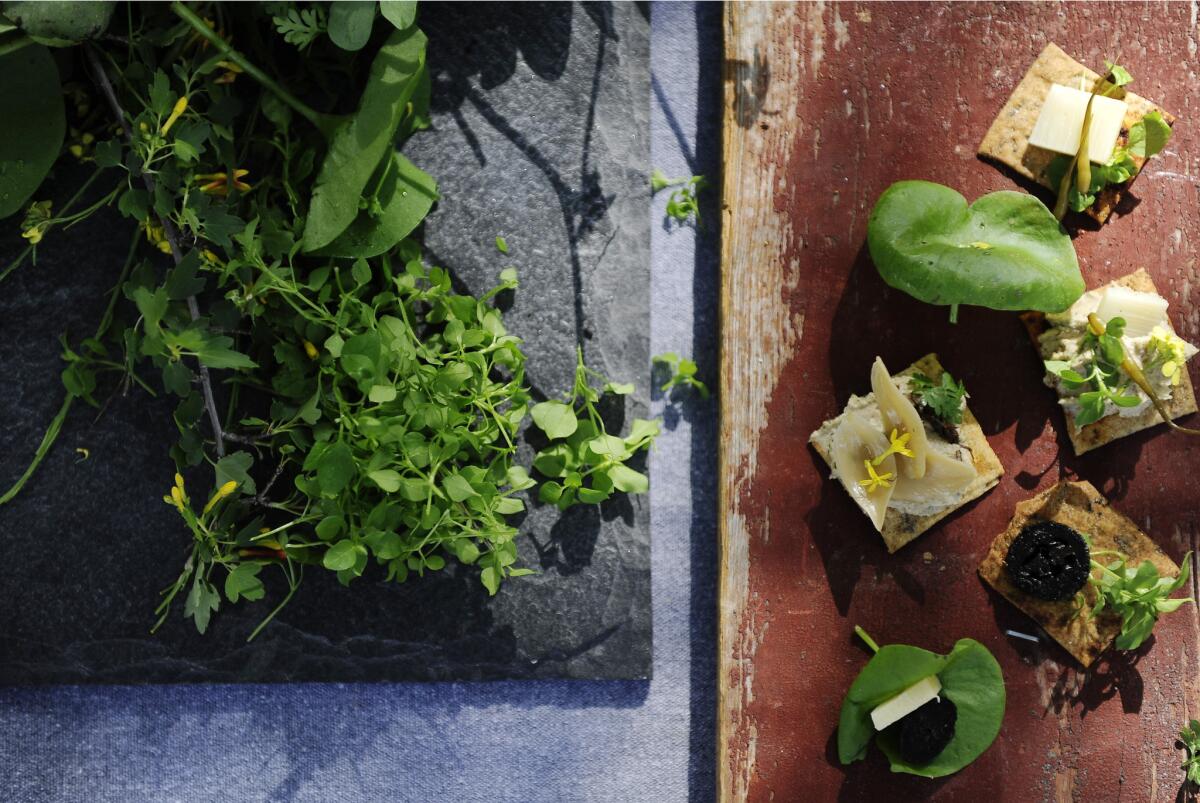
Pascal Baudar puts together crackers and cheese with cricket hummus, black walnuts, yucca shoots, wild radish, olives, yellow flower mustard greens, chickweed and white radish pods.
âIf you do research and find nobody is using it for 10,000 years, you figure thereâs a reason,â he said, picking some cleaver, a green from the coffee family that Baudar uses in medicinal beer and that sticks to your clothes like Velcro. âThis could be interesting at the end of the world, when the Starbucks are all closed.â
A few hours later, his bag full, Baudar got supplies out of his Jeep (equal parts red paint and dust, 250,000 miles and counting), and set up lunch. As he does with the classes he teaches, the forager translates what heâs collected into a meal, doing an ad hoc cooking demo in the woods for the small collection of hikers and foodies who typically sign up. He sets out Mason jars of pickled seeds, smoked chickweed powder and cattail pollen, then fires a portable gas stove to heat up a cast-iron pot containing a dish of lamb in mugwort beer with manzanita berries and willow leaves.
This is cooking that is both exactly on-trend and vaguely prehistoric. âOver time, itâs become my own cuisine,â said Baudar as he pounded some âforest floorâ spice blend (leaves, grass, sagebrush) with a mortar and pestle, the rocks for which heâd also found in the woods. âAnd then, guess what: Five years ago, it became trendy!â
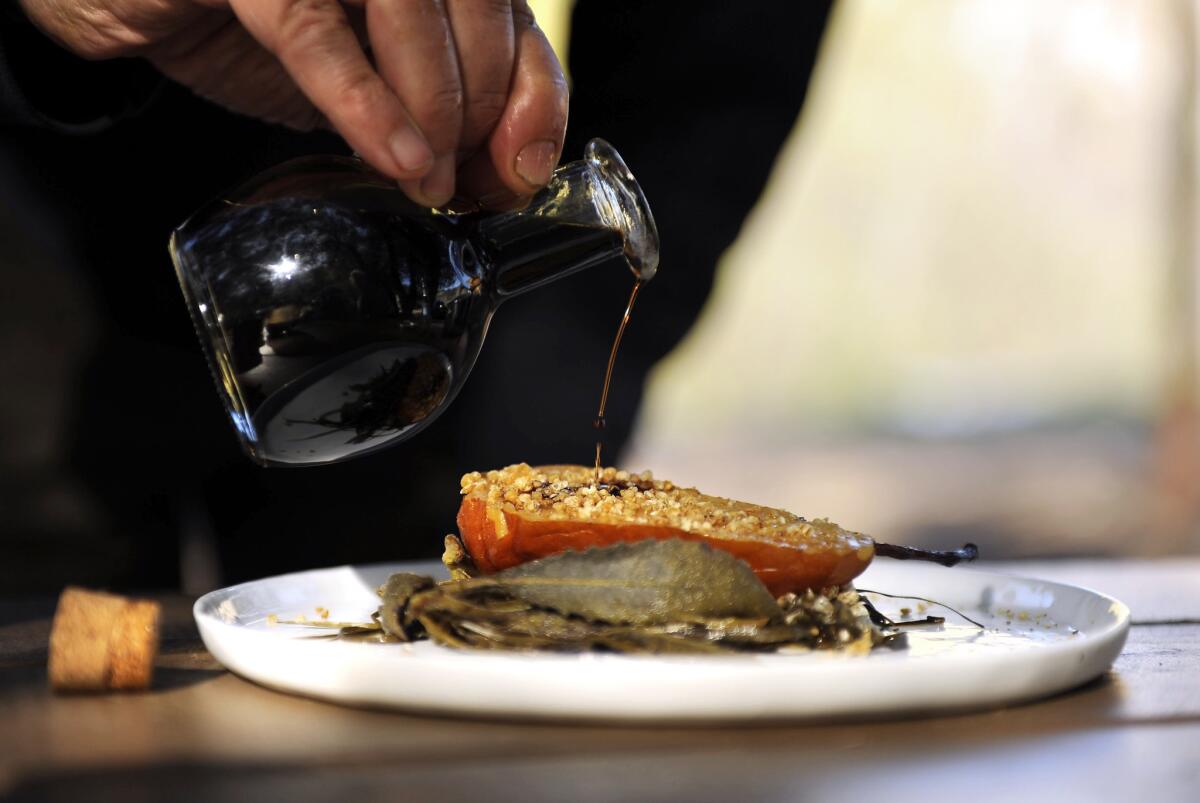
Pascal Baudarâs dish Pears on the Forest Floor is finished off with a drizzle of California nocino.
A good trend, of course, is also a moving target, a recurrent motif, a coda. Being able to find your dinner outside is as pragmatic as it is creative, a skill â please remember that you cannot eat just anything â that can only get handier in the future. This is true whether your idea of the end times means âThe Walking Deadâ or GMO foods infiltrating tasting menus.
âMy passion since 1999 has been to discover the flavor of California,â said Baudar, summing up both that dayâs path through the local forest and many of the more ambitious newer restaurants in Los Angeles. âWhat if you could create a real California cuisine? And Iâm not talking farmers markets.â Wind blew through the oak trees, the smell of sage moved in like weather.
âI could spend 10 lifetimes and still not discover everything. Thereâs so much more to do.â
More to Read
Eat your way across L.A.
Get our weekly Tasting Notes newsletter for reviews, news and more.
You may occasionally receive promotional content from the Los Angeles Times.
